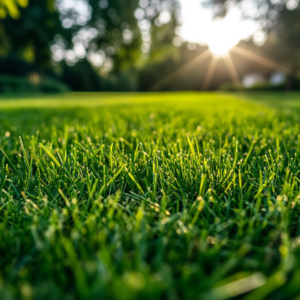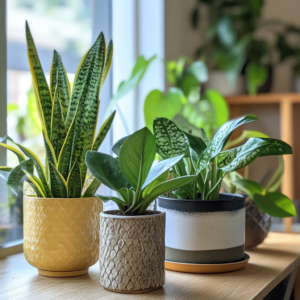Fertilizers are important in plant growth and help plants attain healthy and strong development. However, there are many fertilizers present on the market, each containing different nutrient contents. So it is sometimes confusing to choose which type of fertilizer is suitable for your plants. This guide will help you choosing the right fertilizers for different plants and make informed choices on behalf of your garden in no time.

Types of Fertilizers
There are two major types: organic and synthetic. Each has its own unique features. Understanding them will help you choose the right fertilizer for the plants.
Organic Fertilizers
Organic fertilizers include compost, manure, bone meal, and plant residues—those that come from natural things. They improve the condition of the soil over a period as they enhance the structure and microbial activity in the soil.
Advantages:
Eco-friendly and sustainable.
Slow-release, providing nutrients gradually.
Enhances soil texture and fertility.
Disadvantages:
Much slower results compared to synthetic fertilizers.
May require more material to achieve visible results.
Synthetic Fertilizers
Synthetic fertilizers are manufactured using chemical compounds and are designed for precise nutrient delivery. They are usually labeled with an NPK ratio, such as 10-10-10.
Advantages:
Very effective and fast-acting.
Easy to measure and apply.
Available in several formulations to meet the specific needs of plants.
Disadvantages:
If used too long, they can be harmful to the health of the soil.
Possible runoff into the environment causes pollution.

Matching Fertilizers to Plant Needs
The type of plant, the growth stage, and the soil condition call for the right choice of fertilizer. Let’s look at how to go about selecting fertilizers for different categories of plants.
Flowering Plants
Flowering plants require a fertilizer high in phosphorus since this is a nutrient that encourages blooming. Look for a higher middle number in the NPK ratio, such as 5-10-5. Apply at the flowering stage to increase blooms.
Tip: Do not overdo nitrogen because it will promote leafy growth at the expense of flowers.

Vegetables and Fruits
Vegetable and fruit plants require a balanced fertilizer to take care of vegetative growth as well as fruit production. Most vegetables do well on 10-10-10, whereas fruiting plants such as tomatoes do better on fertilizers with a little higher potassium.
Tip: Use slow-release fertilizers to ensure nutrients availability throughout the growing season.

Lawn Grass
Grass loves nitrogen, which develops lush, green growth. Lawn fertilizers are usually high in nitrogen, like 20-5-10. Apply during the growing season and avoid fertilizer applications when the grass is dormant.
Tip: Water heavily after application to prevent leaf burn.

Houseplants
Houseplants are unique because they live in such a controlled environment. Always use liquid fertilizers indoors and dilute the strength to avoid overfeeding. A general houseplant fertilizer will have all three nutrients in relatively equal balance.
Tip: Fertilize sparingly, since indoor plants grow more slowly than those outdoors.

Trees and Shrubs
Trees and shrubs do well with slow-release fertilizers that break down nutrients over several months. Look for products labeled for woody plants and apply in early spring or late fall.
Tip: Avoid fertilizing newly planted trees and shrubs until they are well-established.

How to Choose the Right Fertilizer
Selecting the right fertilizer involves understanding your plant’s needs, soil condition, and environmental factors. Here’s a step-by-step process:
- Test Your Soil:
Use a soil test kit to determine pH levels and nutrient deficiencies. This information will guide your fertilizer choice. - Identify Plant Needs:
Understand the nutrient requirements of the plants you’re growing. Leafy vegetables need more nitrogen, while root crops like carrots require phosphorus. - Read Fertilizer Labels:
Fertilizer packages display an NPK ratio that shows the percentage of nitrogen, phosphorus, and potassium. Choose a ratio that corresponds to your plant’s needs. - Consider Growth Stages:
Plants have different nutrient needs during various growth stages. For example, seedlings require more phosphorus, while mature plants benefit from balanced nutrients. - Evaluate Fertilizer Type:
Decide whether to use organic or synthetic fertilizers according to your gardening goals and preferences.

Application Tips for Fertilizer Success
Application is equally important as the choice of fertilizer. Follow the tips below to ensure your plants reap the maximum benefit:
Timing: Apply the fertilizer early morning or late afternoon. This prevents burning of leaves and nutrient loss through evaporation.
Quantity: The dosage will be indicated on the fertilizer package. Avoid over-fertilization, as it might burn the plants.
Method: Apply by sprinkling granules, mixing liquids with water, or broadcasting slow-release pellets.
Water: Always water plants immediately after fertilization to aid nutrient absorption into the soil.
Frequency: Feed your plants regularly but avoid overdoing it—most plants benefit from feeding every 4-6 weeks.

Common Mistakes to Avoid
Even the most seasoned gardener sometimes makes fertilization mistakes. Avoid these pitfalls:
Over-Fertilizing: Too much fertilizer can burn plants and damage roots.
Ignoring Soil Condition: Fertilizing without testing soil can lead to nutrient imbalances.
Using the Wrong Fertilizer: Mismatched fertilizers can harm plants or fail to provide the desired results.
Applying at the Wrong Time: Fertilizing during dormancy or extreme weather conditions reduces effectiveness.
Choosing the right fertilizer for your plants is a crucial step in ensuring their health and productivity. Knowing the needs of your plant, testing the soil, and choosing between various types of fertilizers all lead to a successful garden full of healthy and colorful blooms. Whether you use organic or synthetic fertilizers, balance is key. Take your time, learn from your plants, and experiment with what works best. With the tips in this guide, your garden will surely thrive!

